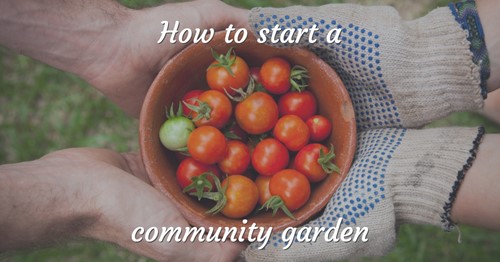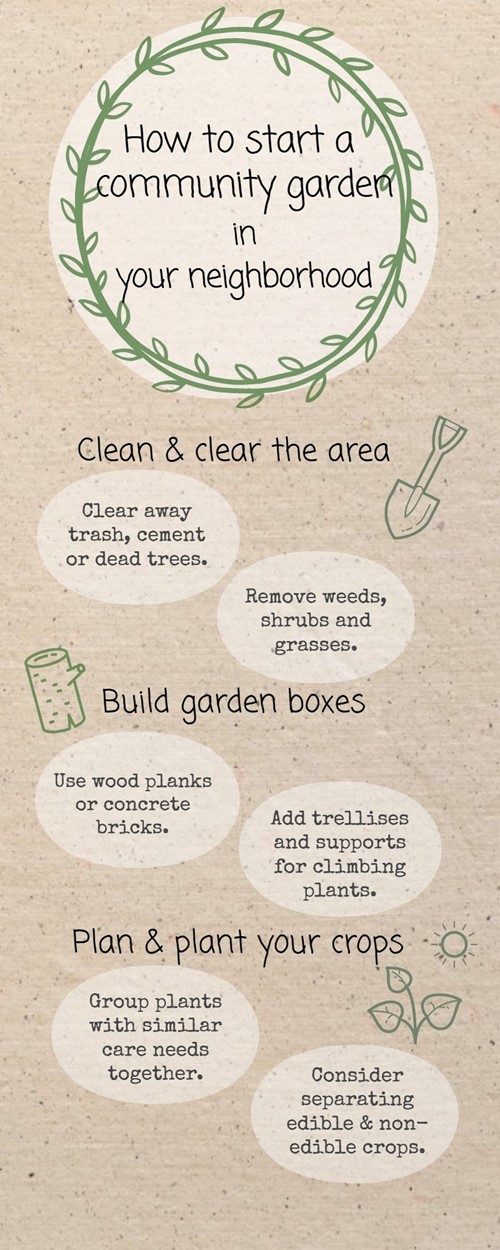
Community gardens can be a great way to increase urban farming and maintain the native species of the area. They’re excellent ways to help maintain fresh food while creating green space for folks to enjoy. These gardens can be started by anyone, though you should ensure everyone participating in the project is legally allowed to garden on the property being used.
Here’s a quick guide to creating a community garden that you and your neighbors can enjoy:
The most important starting point is getting the space cleaned up. If there are large or industrial bouts of cement or other materials, be sure to have a certified professional help break up and dispose of those pieces before you get started.
For land with only weeds, dead brush and other organic plant matter, an afternoon of yard work should be all it takes to clean up the area. Once cleaned, you can design your community garden with your neighbors.
After cleaning the area and designing your plots, it’s time to build the containers you’re going to plant in. These containers can be floating garden boxes for smaller items such as herbs or small greenery. For deeper planters, try creating boundaries of concrete or wood.
Once you have your planters created and set up, it’s time to replace the soil. Most home improvement and garden stores will have soil with specific nutrients to help your garden thrive.
With the containers set up, now it’s time to plant your garden. Some plots may be large enough for seed balls, especially if the area is frequented by small creatures or harsh weather. For areas that may not need as much protection, plant seeds evenly and with enough room to start rooting.
Be sure to incorporate some native plants into your community garden to ensure the ecosystem stays intact.

Now you and your community can sit back and watch your garden grow as you all continue to cultivate it together. Anything that isn’t immediately used by neighbors in the community can be donated to local shelters, while the non-edible plants can be used as decoration for your homes and the rest of the neighborhood.

JoAnn Drabble prides herself in making a "personal investment in each client”. With over ten years of experience working as a paralegal for various law firms, JoAnn brings significant legal expertise to her work. She understands the ins and outs of the real estate business and follows through on her sales from start to finish. She is often praised for her attention to detail in all aspects of a sale.
Working as a full-time professional in the real estate industry for 27 years, JoAnn has continuously been a top sales producer. She attributes her successful sales’ results to the personal relationships that she forges with her clients. Her years of experience combined with her outgoing personality and compassionate nature enable her to understand both the stated and unspoken needs of clients who are buying and selling their homes. JoAnn stays current with changing market conditions and trends in order to provide exceptional service and ensure a timely sale.
Her perseverance and real estate market savvy help her achieve 100% client satisfaction. The relationships that JoAnn forms with clients often last long after the purchase or sale of a home. Her clients’ satisfaction is her top priority and drives her to consistently exceed her performance goals and expand her growing referral base.